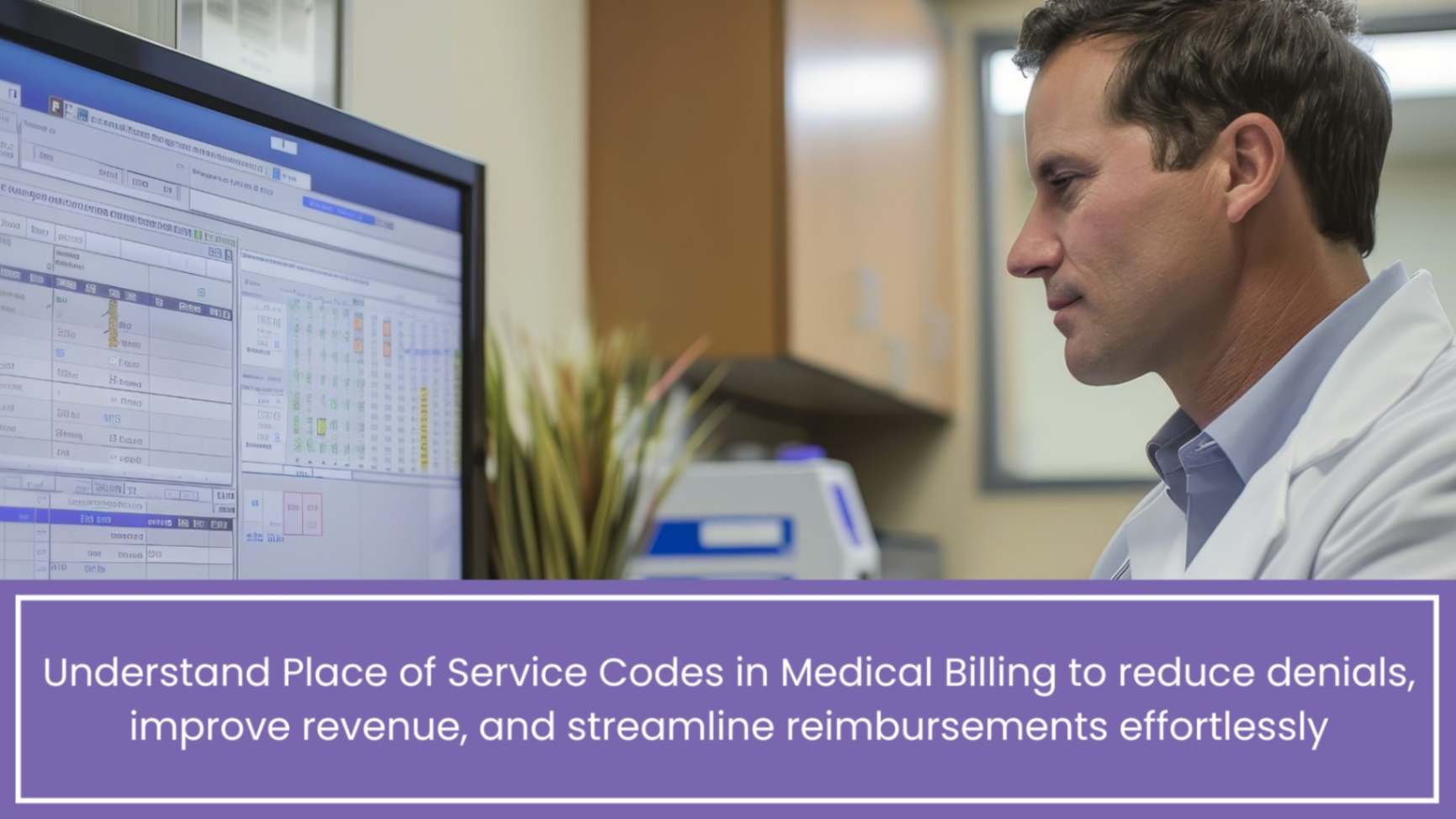How to Avoid Most Common Medical Billing Mistakes
The term “revenue cycle management” (RCM) is a crucial aspect of healthcare. It is essential to all medical practices. RCM encompasses all clinical and administrative tasks related to patient service revenue. These tasks include capturing, managing, and collecting revenue. Medical billing is the crucial procedure of filing and pursuing claims with insurance companies to obtain payment for services. RCM is the field that encompasses this process.
A practice’s capacity to provide high-quality care is impacted by how to avoid most common medical billing mistakes. Effective medical billing directly affects a practice’s ability to deliver quality care. This enables the practice to prosper overall. It also enables the practice to retain talented staff and make investments in new technologies. Getting compensated isn’t the only goal. A constant income flow, fewer claim denials, and reduced administrative burden are all guaranteed by an accurate and efficient medical billing process. Inefficiencies and errors in medical billing can cause operational difficulties. They also result in substantial financial losses and compliance problems. Knowing how to steer clear of medical billing errors is a basic necessity for long-term success in the modern healthcare setting. It is not just a best practice, but a fundamental requirement.
Table of Contents
Understanding the Most Common Medical Billing Mistakes
The medical billing procedure is fraught with potential hazards. The process carries a number of possible risks despite its critical importance. Your bottom line may be impacted by common medical billing Mistakes. Even with knowledgeable employees and advanced technology, these errors can occur. Effectively preventing medical billing errors begins with identifying common mistakes. These common mistakes are the first step in preventing errors.
- Inaccurate patient information is a frequent error in medical billing. It is a significant problem in the field. Claims may be denied immediately for simple errors in information like names, dates of birth, or insurance policy numbers. These errors can lead to claims being rejected. This small mistake could cause delays. Due to these delays, time and money must be wasted on manual intervention and resubmission.
- Another significant issue is coding errors. Using out-of-date or inaccurate CPT, ICD-10, or HCPCS codes is a common coding error. This error can lead to billing issues and inaccurate claims processing. Both undercoding and upcoding are serious problems. They involve billing for a less sophisticated service or a more complex service than was actually provided. Undercoding causes lost revenue. Upcoding may result in fraud claims. Similar to unbundling, billing different parts of a single treatment separately raises serious concerns for payers. This practice may lead to audits. Medical billing best practices emphasize staff knowledge of current coding standards. This ensures accurate and compliant billing.
- Lack of medical necessity documentation is another common pitfall. Insurers will reject claims if the medical record does not clearly show the medical necessity of the treatments or procedures. They will not cover treatments or procedures that are not deemed medically necessary. Documentation is closely examined by auditors. If the documentation does not support the codes supplied, recoupments and penalties may result. This demonstrates the relationship between appropriate billing and correct clinical documentation. This relationship is mutually beneficial.
- Missed deadlines for claim submission are entirely preventable yet frequently occur. Every payer has stringent claim submission deadlines. Missing these deadlines frequently results in complete payment forfeiture. Monitoring dates for different payers is essential to optimizing income. It can be difficult, but it is essential.
- Last but not least, human error or system errors can cause duplicate billing. This occurs when the same claim is submitted more than once. It’s frequently inadvertent, but it raises concerns with payers. It may result in fines. Clinics that want to achieve high medical billing compliance must identify and address frequent billing issues. To ensure compliance and stay out of trouble, this is essential.
Impact of Medical Billing Mistakes
Errors in medical billing have significant consequences. These consequences go beyond simply rejected claims. These mistakes have the potential to ruin your entire practice. They could do significant damage to operations, finances, and reputation.
The most obvious effect of a decrease in cash flow is a decrease in finances. A decline in cash flow has an immediate effect on finances. The practice’s financial viability is at risk. Decreased revenue from claims that are refused or delayed is the cause. THe practices’ capacity to maintain operations may be impacted by this financial hardship. It may also impact their ability to buy equipment and pay staff. Your employees lose time on each claim that needs to be revised. This lost time could be used for other important duties or creating new claims. The profitability of your practice can be significantly impacted by rework costs. These costs can quickly accumulate. Common errors in medical billing can lead to uncollectible revenue. These errors often result in services being provided for free.
There are serious risks, both financial and otherwise. These risks include compliance issues. Payer billing audits are triggered by recurring medical billing irregularities. These irregularities often involve upcoding, unbundling, or lack of medical necessity. These audits take a lot of time and resources. They may lead to hefty fines, penalties, and requests for reimbursement of already paid claims. Consistent non-compliance can result in expulsion from federal healthcare programs. In extreme circumstances, this can happen. You must maintain strict medical billing compliance. This safeguards your practice.
Operationally, medical billing errors create inefficiencies. Your billing staff will spend many hours locating, contesting, and resubmitting refused claims instead of focusing on new claims or follow-ups. A backlog can lead to a less productive workplace. Employee burnout may also result from a backlog. Issues with billing may result in confusion and unanticipated costs. Relationships with payers may suffer, and patient satisfaction may suffer. Learning to avoid medical billing errors safeguards your practice from all sides. It’s about protecting your practice from potential issues on all fronts.
Proven Strategies to Avoid Medical Billing Mistakes
Your best defense against medical billing errors is proactive steps. These steps help you avoid errors and ensure accurate billing. Your clinic’s financial health can be improved. Strong medical billing best practices can decrease errors and improve your clinic’s overall performance.
- It is essential to make continuous training and education investments. Continuous learning and skill development are vital. New codes, rules, and payer policies are introduced in medical coding and billing. These modifications are always changing. It is essential that your healthcare providers have the most current CPT codes, ICD-10 codes and HCPCS Level II codes. Maintaining current knowledge of coding standards is ensured by regular training. Having current information is the first step in preventing medical billing errors. To maintain high skill, resources like as webinars, workshops, and professional certifications are essential. They support the maintenance of current information and keen skills. They help maintain and improve skills. Precise documentation is crucial for truthful assertions. It forms the foundation for accurate and reliable information.
- Implement Robust Internal Auditing and Review Processes: Don’t wait for an external billing audit healthcare. Before submitting claims, perform routine internal audits. After claims have been paid, continue routine internal audits. In order to verify accuracy, a sample of claims must be compared to patient data. This comparison is necessary for coding and documentation of medical necessity. A vital first line of defense against medical billing errors is the use of claim scrubbers. Claim scrubbers can automatically detect discrepancies and potential problems with medical billing.
- Electronic Health Record (EHR) and practice management systems are advanced. They reduce frequent medical billing mistakes. Use built-in coding tools. These tools recommend suitable codes based on documentation. Use claim scrubber software. This software verifies claims for mistakes, discrepancies, and payer-specific regulations before submission. Human error in medical billing can be decreased. Automation can greatly reduce this error. Strong reporting capabilities can help identify areas where employees need more training or where procedures need modification. This is because they can spot denial trends.
- Create clear communication channels. Make sure healthcare staff and billing staff can easily ask questions about paperwork or coding clarification. Many medical billing problems result from miscommunications between departments. These miscommunications are often the cause of billing issues. Frequent gatherings can help close the gap. Also, specialized routes of communication can be useful. Encourage staff members who are unsure to ask inquiries. This helps avoid assumptions. This will help prevent non-compliance.
- Stay Up to Date on Payer-Specific Policies: Prior authorization requirements, policies, and laws are specific to insurance payers. These requirements can vary even when generic coding criteria are used. To prevent denials, billing staff must be careful to understand these subtleties. Important medical billing advice is to stay informed. Sign up for payer newsletters and visit their websites frequently. Medical billing compliance requires attention to detail. Successful medical billing compliance requires attention to detail. An effective medical billing strategy requires this level of attention to detail.
Emerging Trends and Technologies in 2025
The use of technology is changing healthcare billing practices. Regulatory changes also influence the healthcare billing landscape. 2025 expects to transform medical billing by addressing frequent errors. Several developments and trends could answer the ongoing struggle on how to avoid medical billing errors.
- Machine learning and artificial intelligence are increasingly used in medical billing. This tendency is significant. Large amounts of data can be analyzed by AI-powered systems. Trends, claim denial predictions, and even code modifications can be found with the aid of this study. These systems can greatly lower medical billing errors. They can also improve overall accuracy by offering real-time feedback and learning from previous denials. Before submitting your claim, imagine an AI “coach” reviewing it. This AI coach will point out any potential medical billing errors.
- The capacity of blockchain technology to provide secure, transparent, and immutable transaction records has made it popular. Because of this, it is a useful tool for many different purposes. Blockchain has the potential to transform claim processing. It offers an unchangeable audit trail, boosting confidence and potentially expediting payment processes. This has the potential to revolutionize medical billing. It could revolutionize medical billing compliance.
- Predictive modeling and data analytics will become increasingly important. Sophisticated analytics are used by practices to predict revenue shortfalls, understand medical billing problems, and spot trends in denied claims. This data-driven method enables preemptive interventions and ongoing improvement to prevent medical billing errors. It helps to prevent medical billing errors.
- The expansion of telehealth services necessitates accurate and flexible invoicing procedures. These regulations need to be flexible enough to change with the telehealth industry. To ensure proper remuneration, practices must remain current on modifiers and codes for virtual visits. This will prevent denials. Medical billing practices for telehealth will evolve as telehealth regulations develop. These practices will be shaped by the evolving rules surrounding telehealth. Practices in 2025 and beyond need to adjust to new technologies. They must also understand how these technologies affect medical billing errors.
Conclusion:
Billing for healthcare necessitates ongoing attention to detail. Success in this challenging area requires a commitment to continuous improvement. Your practice can improve its financial health. Strong compliance can be ensured by proactively establishing best practices for medical billing. Risks can be decreased. Medical billing processes can be sped up. Implementing technology, investing in training, and developing an accurate culture can help. This allows healthcare professionals to focus on patient care. It frees up healthcare professionals to concentrate on giving patients the best possible treatment. Avoiding frequent medical billing errors is smart business. It is also necessary for the long-term viability of your clinic.
What is the most significant consequence of medical billing mistakes?
Financial losses resulting from denied claims have the largest effect. Additionally, this loss results in reduced cash flow and the potential for fines or penalties from payer audits and compliance investigations.
Can automation really help prevent medical billing errors?
Yes, without a doubt. Common medical billing errors can be reduced. Automation technologies can spot errors and inconsistencies. These technologies include claim scrubbers and AI-powered coding assistance.
How often should our billing staff receive training on coding updates?
Given the dynamic nature of coding and payer regulations, your billing staff should receive ongoing training and updates at least annually, and ideally, as new codes or significant policy changes are announced throughout the year to ensure medical billing compliance.
In the healthcare revenue cycle, medical billing services is essential because it has a direct effect on patient care quality, operational effectiveness, and financial stability. In addition to highlighting frequent medical billing errors that can result in denials, compliance problems, and financial losses, such as coding errors, inaccurate patient data, and missed deadlines, this article examines the vital importance of accurate billing methods. It provides tried-and-true methods for lowering errors and guaranteeing compliance, such as ongoing employee training, thorough internal audits, automation tools, and transparent communication procedures. The paper also explores new developments that will influence billing in 2025, such as blockchain, AI, predictive analytics, and modifications to telehealth billing. This thorough book gives you the knowledge and resources you need to protect your practice’s income and expedite your billing process, regardless of your role as a healthcare administrator, biller, or clinician.
ALSO READ – Simplifying Revenue Management: How Medical Billing Services Empower Small Practices
Talk to Medical Billing Expert Today — Get a Free Demo Now!






